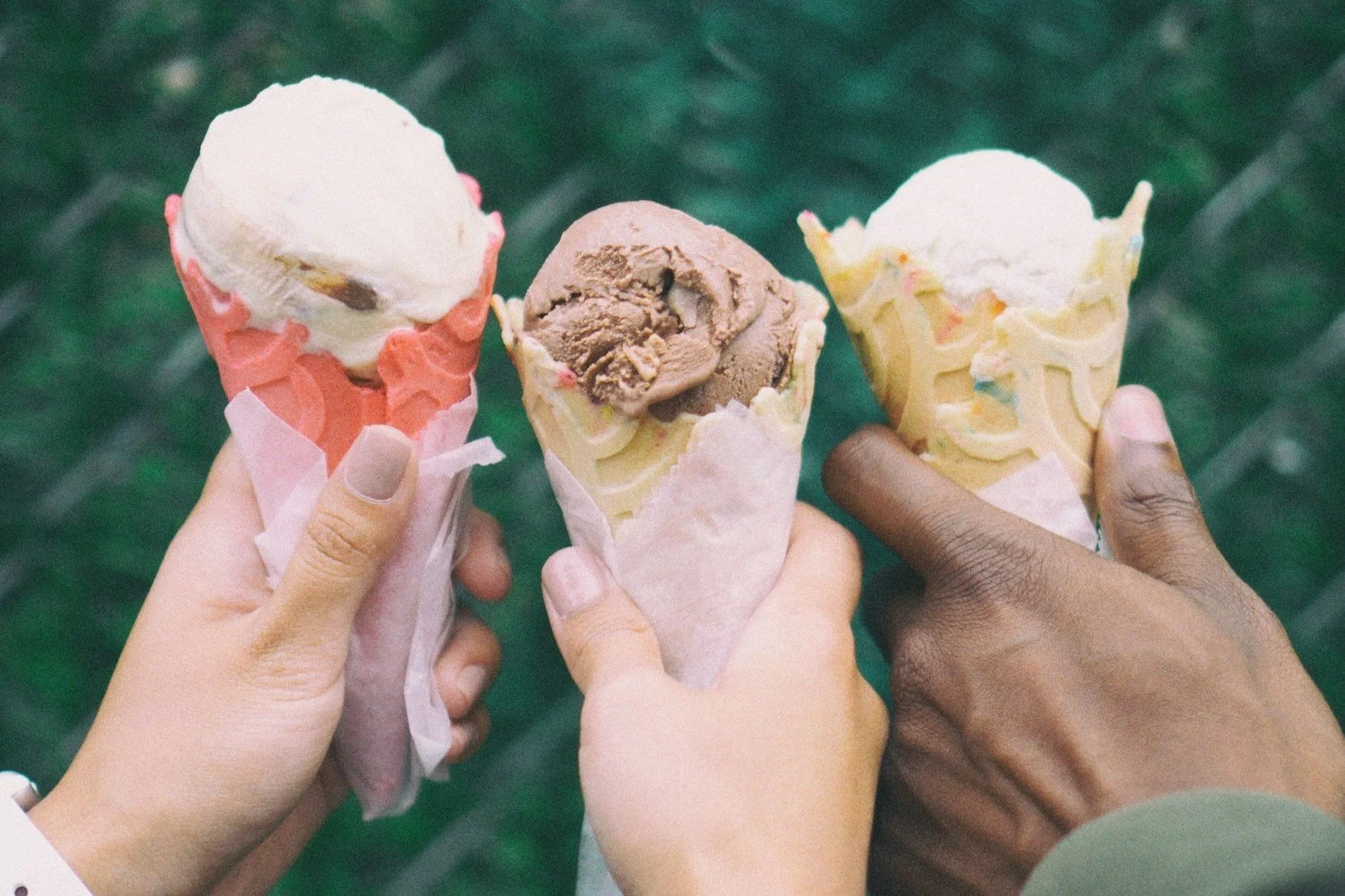The Scarf: A Most Versatile Design
Halfway through his presentation, our tour guide in Cambodia revealed quite abruptly that his own father was tortured and executed by the Khmer Rouge in the late 1970s. The students and I were already feeling quite somber about visiting the killing fields just outside of Phnom Penh, and this revelation heightened our sympathy for him and increased our interest in his personal stories of escape and loss. If we weren’t paying attention to him before, everything he said from now on would command our full attention.
At one point, our guide pointed out a scarf, or krama, that the Khmer Rouge would wear as part of their uniform. Our guide said that he will never wear those particular colors and patterns. For him, those colors and that pattern represent the worst of humanity.
At the same time, his own krama or scarf of a different color (blue and white), which he carried and wore continually, was clearly of great value to him and is to most traditional Cambodians. I’ve since learned that the krama is special and holds great cultural significance. It can be used at weddings, births, and deaths, and is sometimes passed on from generation to generation.
But a krama is more than just a symbol. More than just a trinket or something nice to hold, look at, or hang in one’s room. A krama has considerable value as a stand-alone product. That’s what struck me the most. A beautiful and meaningful symbol has significant physical purposes and uses.
It left me thinking about my own possessions. Some of my possessions are beautiful to see and sit on the shelf but have no utility, while others have only utility but have no aesthetic purpose or meaning, and sit in a dark closet until I’m ready to use them. Why should I not embrace products with both? The Cambodian krama certainly does.
Ten Ways to Use a Scarf
I saw our guide wear his krama in at least three ways, and later he shared with the group the additional multiple and versatile ways a scarf can be used to benefit its owner.
Not surprisingly, he started off by saying a scarf could be used to shade one’s head from the sun. It was very hot for the students and me in Phnom Penh, Cambodia, since we’re accustomed to having a much shorter and milder warm season. Some of us had brought umbrellas to provide shade while we walked around, but the ease with which our guide would flip his scarf from his neck to his head was enviable. Our umbrellas were cumbersome on the bus and required a hand to hold them up while walking. In contrast, his scarf was accessible, lightweight, and ready to be used without burdening either of his hands. A one-second flip of the wrist and he was shaded from the sun. We were all a little jealous.
Of course, as the human body sweats in high temperatures, it’s nice to wipe the sweat away. A thin, lightweight scarf is perfect for that. With two long scarf ends hanging around his neck on each side, his dripping forehead became clear of sweat with the quick grab and wipe of his hand. I, by contrast, would wipe my sweaty forehead with my sweaty forearm and make no real progress other than moving the sweat around. My hometown is in a climate where people don’t really need handkerchiefs for sweat, but I definitely wanted and needed one in Cambodia. Our tour guide had the perfect product for providing shade and managing sweat - his scarf.
While in the sun, he would drape the scarf over his head while we walked around the Killing Fields, but he demonstrated that with a few folds here and there, he could make a hat in just a few seconds. It was a simple process of three quick origami folds, but it was nevertheless impressive that a scarf could double as a hat in seconds. He didn’t just wrap it around his head like a turban (which of course would work as well), but it became a large pocket which he then slipped over his head like a cap, fulfilling the same roles as protection from sun, rain, wind, or tree branches.
Figure 1: One of the many ways our guide (on the right) oriented his krama during the tour.
Speaking of wind, he shared that a scarf works perfectly as a face mask in certain scenarios, either to hide one’s face, protect one’s face, or filter out certain (large) particulates. It understandably wouldn’t be sufficient for airborne pathogens; however, it might be adequate for sawdust and bugs. And speaking of rain, a scarf can clearly be used as a towel after a shower if needed. It can clearly soak up sweat, but it could dry out some rainwater as well.
Scarves can also be worn as a shawl. Sometimes on our trip to holy sites, students’ shoulders or legs needed to be covered out of respect for the sanctity of the location, and a scarf would have been the ideal product to achieve the required modesty for visiting.
Our guide also demonstrated a clever way to roll up the scarf and place it on one’s head to carry heavy loads. This padding would allow the person to carry a larger payload on their head with less discomfort.
But with a smaller payload, like some fruit, he demonstrated how a little knot could make a quick little cradle for holding an apple or banana or most of one’s lunch. No need for a purse or small shoulder bag if you can make one with a simple knot from one’s scarf. Tying it around one’s shoulders or waist allows one to forego the hip pack or utility pouch and use the scarf for such a purpose when needed.
A scarf can also double as a short rope. When rolled along its short dimension, it can serve many of the same purposes as a rope. This includes acting as a medical brace, a tourniquet, a way to lash sticks together, and countless other rope-like applications.
One of my favorite uses our guide shared with us was using a scarf to cook rice! It wasn’t very quick or robust, but he said in a pinch, you could find some hot water and soak the rice via the scarf if necessary. I was intrigued.
Conclusion
Regardless of the 10 or so uses briefly described above, the fascinating element was that his scarf or krama was concurrently a meaningful symbol of his heritage and represented his nation and ancestry. I could sense immense pride in what his krama stood for, but also in its multiple and versatile uses. He didn’t need something fancy, expensive, or large to meet the multiple needs he had on a daily basis. I was impressed.
I pondered about my own assets and thought about if I have a product that has so many uses that I benefit from every day. There was one - my phone. It is a camera, a dictionary, a notepad, a reminder, an alarm clock, a compass, entertainment, education, and many other things. But it is expensive, it is large, and it is fancier than I need. It will also be obsolete in another year, has no meaning for me or my family, and is almost pure utility.
There is a part of me who now wishes for products that are both meaningful and useful in multiple ways. Why can’t we have both? Like a scarf?
To cite this article:
Salmon, John. “The Scarf: A Most Versatile Design.” The BYU Design Review, 23 June 2025, https://www.designreview.byu.edu/collections/the-scarf-a-most-versatile-design.






